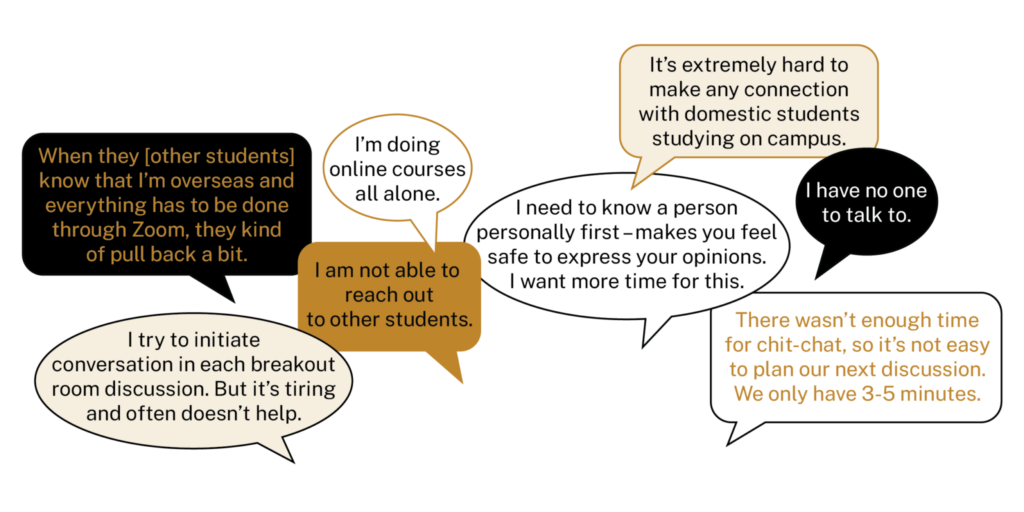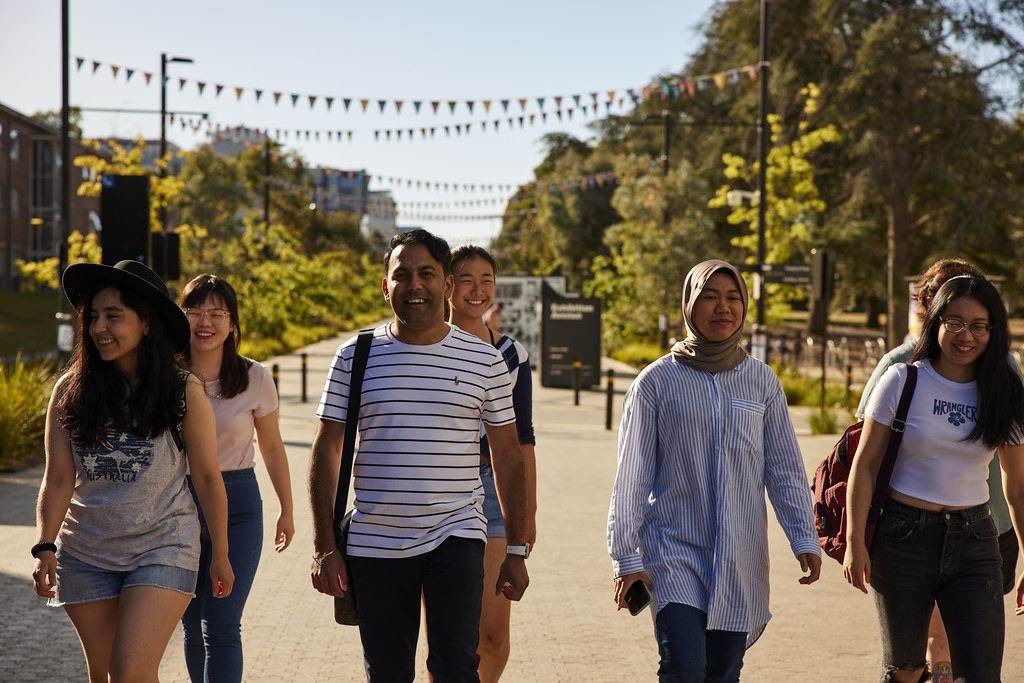Earlier this year, the ANU Service Experience team (previously Experience Accelerator) interviewed remote overseas students about their online learning experience (find out more about the project). While this human-centred design (HCD) research revealed at times a depressing picture of the remote student experience, it also generated a collection of practical suggestions directly from students for how their online experience could be improved. Today, we will share with you their tips and tricks for fostering connection at the start of the semester.
Remote overseas students find it challenging to meet and interact with other students while studying online.

Tip: Dedicate blocks of time to introduce students to each other in the lecture or tutorial Zoom call, especially for larger classes. Allow enough time in breakout rooms for students to have proper conversations (minimum 20 minutes).
Tip: Facilitate and encourage discussion with interesting ‘icebreaker’ topics or questions. For example, encourage your students to tell each other about the space they are studying in or even do a little ‘show around’ if they are comfortable doing so.
Remote overseas students want to feel ‘seen’ and that they ‘belong’ to the ANU community.

Tip: Remind everyone at the start of the class that there are remote students in the course, and that it would be super helpful if people could turn on their videos so it is easier to meet people.
Tip: Set expectations about engagement and having video on during class, unless students inform you of specific reasons for keeping their video off. Set a ‘social contract’.
Tip: Encourage students to have a friendly and colourful Zoom profile photo, so even if their video is off, everyone can see their photo.
Tip: Encourage remote students to share their experience with the class. Ask “what do you need from us?”
Remote overseas students experience practical challenges of studying online and in different time zones.

Tip: Ask how many remote students are enrolled in the course, where they are located and what the time difference is for them compared to Canberra – you can use a Wattle poll or simply ask during the first lecture. Use this information to provide assessment due dates in their local time or set up appropriate consultation times. You can also provide a time zone calculator (see this example) or a conversion table for due dates and times in different time zones compared to Canberra. Consider providing tutorial or lab options to better suit different time zones.
Tips for using Echo360
Here are some more tips for using Echo360 from Isha Singhal, an ANUSA general representative, who is studying remotely from New Delhi doing a double degree in Economics and Science. Her suggestions include feedback from other students. As Isha pointed out to us, these tips not only address the needs of remote learning students but also make your lectures more accessible in general, for example to students with disabilities.
- When you’re pointing to something physically, it isn’t naturally captured by Echo. It can be hard for us to understand what you’re pointing to or talking about.
- Possible solution: Echo has a spotlight feature that can be used as a way of pointing at things on slides.
- If someone in the audience says something, either as a response or to make a point, it is not captured.
- Possible solution: Please repeat what they say so that online students can hear it too, and it’s captured in the recording.
- If Echos are scheduled for auto-capture – with an auto-end, sometimes they may cut early if the recording starts sooner or ends later.
- Possible solution: Be mindful of the time and try to finish slightly before time. Or send a follow-up post on Wattle of the content covered but not recorded.
- Keep Echo Closed Captions on, as this can be especially helpful for students who have never been exposed to an Aussie accent.
ANU Lunch Vox#6 – In your students’ shoes: The remote student experience
Are you interested in learning more about what it’s like to study remotely as an international student? Join the ANU Lunch Vox #6 on 12 August on the Remote student experience, hear from a panel of international students and ask questions on how you can help them to have a better online learning experience.
Looking for help with designing a great online learning experience?
Individual or group consultations are available with our friendly CLT staff. Or have a look at our online resources.
All quotes and tips presented in this article come directly from overseas remote learning students. If you would like to learn more about the Service Experience team’s work with Remote Students in early 2021, please contact Ravinith Prasad, Program Manager, at experience@anu.edu.au.
Related articles:
- Tips to thrive while teaching online in second semester
- What can we learn from the Semester 1 2020 T&L experience at ANU?
Ravinith Prasad is the Program Manager of the ANU Service Experience team (previously Experience Accelerator). Hannah Birke is the Communications Coordinator and Claire Brooks is an Educational Designer at the Centre for Learning and Teaching.







